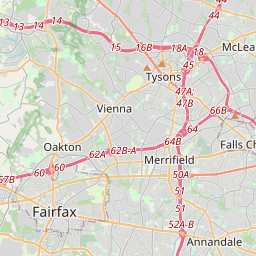Inscription
Alexandria Heritage Trail
The area around duke street between Hooff's Run and the base of Shuter's Hill was once known as "West End." Originally subdivided and sold by John and Thomas West in the 1780s, West End became a thriving community well positioned for commerce along the Little River Turnpike (now Duke Street). The City of Alexandria annexed West End in 1915, and eventually its distinctive name was lost. With subsequent annexations, the current western portion of Alexandria became known as West End.By 1815, a variety of tradesmen had established their homes and businesses at West End. Butchers, tanners, millers, carriage maker, tavernkeepers, wheelwrights, blacksmiths, soap and candle makers chose West End for availability of large land parcels outside the town limits and proximity to customers traveling on the thoroughfares. Within the next 100 years, West End residents also engaged in slave dealing, glassmaking, brewing beer, selling dry goods and food, providing water, as well as growing flowers in commercial-scale greenhouses.
"West End—a village joining this city and separated from the Corporation limits by Hooff's Run, is a very old place? We have heard old people say that they remembered when West End, was in one sense, 'a shipping port' for that they have seen a flat bottom boat come up Hooff's Run to the Stone Bridge, land oysters there, and take on board a return cargo " —Alexandria Gazette, September 28, 1868
While some families continued in West End for generations, there was a great deal of transiency among tradesmen. Charles Jones advertised: "... he has again commenced business at WEST END Duke Street....Coachmaking... having a number of steady workmen in different Branches, and all kinds of materials for carrying on his business Extensively." Yet Jones left next year and rented his buildings to James Sheehy for his Soap and Candle Manufactory. Sheehy advertised that he kept "a few thousand weight of hogs lard" on hand. —Alexandria Gazette 2/27/1798; 12/21/1811.
From throughout the region, employers came to West End for Hiring Out Day every New Year's Day until the Civil War. African American "...men, women and children, mechanics, fieldhands, dining room servants... eating, drinking, fiddling and dancing; all their own masters, so far as having the privilege of selecting their homes for the next year goes. —Alexandria Gazette, January 14, 1860.
(sidebar)Several archaeological investigations have been conducted in advance of new construction in West End. Archaeologists have discovered the remnants of homes which lined Duke Street, the West End Brewery, the Virginia Glass Company, Cameron Mills and the burial vault of the West family, for which West End was named. Some of these sites are protected underground. The 60-foot long cellar for cooling beer survives under Duke Street between Dulany and Diagonal streets, and portions of the bottle factory's gas furnaces and flues are under Carlyle Street circle.
The brick structure at 1707 Duke is the last remaining West End building. Constructed as a home in 1819, it is remembered as the "Bruin Slave Jail" where African Americans were brought before transport to southern markets for resale.
Details
| HM Number | HM1DG6 |
|---|---|
| Tags | |
| Marker Condition | No reports yet |
| Date Added | Saturday, October 4th, 2014 at 3:55pm PDT -07:00 |
Pictures
Locationbig map












| UTM (WGS84 Datum) | 18S E 321278 N 4296949 |
|---|---|
| Decimal Degrees | 38.80320000, -77.05816667 |
| Degrees and Decimal Minutes | N 38° 48.192', W 77° 3.49' |
| Degrees, Minutes and Seconds | 38° 48' 11.52" N, 77° 3' 29.40" W |
| Driving Directions | Google Maps |
| Area Code(s) | 202, 703, 571 |
| Closest Postal Address | At or near 901-999 Daingerfield Rd, Alexandria VA 22314, US |
| Alternative Maps | Google Maps, MapQuest, Bing Maps, Yahoo Maps, MSR Maps, OpenCycleMap, MyTopo Maps, OpenStreetMap |
Is this marker missing? Are the coordinates wrong? Do you have additional information that you would like to share with us? If so, check in.
Nearby Markersshow on map
Maintenance Issues
- Is this marker part of a series?
- What historical period does the marker represent?
- What historical place does the marker represent?
- What type of marker is it?
- What class is the marker?
- What style is the marker?
- Does the marker have a number?
- What year was the marker erected?
- Who or what organization placed the marker?
- This marker needs at least one picture.
- Can this marker be seen from the road?
- Is the marker in the median?

Comments 0 comments